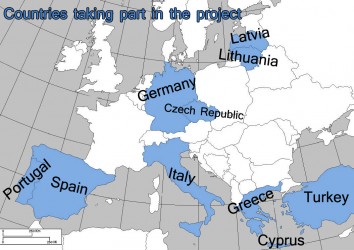The morning is sunny but cool and windy… We are going to Dusseldorf, the capital city of the German state of North Rhine – Westphalia. On the way we learn that Dusseldorf is one of the economic centres of Western Germany located along the river Rhine. It is one of the wealthiest cities in Germany and is home to plenty of fashion, art and fascinating new architecture. Our destination is Media Harbour, the newest landmark of Dusseldorf. We have the excursion here and learn that the former harbor was transformed in a quarter with restaurants, bars, coffee shops, discotheques and hotels. Its flair is based on the mixture of old and new. Protected buildings, depots, quay walls and industrial surroundings stand side by side with modern architecture. There are buildings constructed by Frank Gehry, Helmut Jahn, David Chippefield. The 240 m high Rhine Tower, located right on the river Rhine near the Media Harbour, offers an amazing view from the restaurant at 172 m…
Our next destination is Cologne, but on the way there we get stuck in a traffic jam, so we have some time only for a visit to a magnificent Cologne Cathedral… In the evening we have a farewell party at “Buena Vista” pub…


